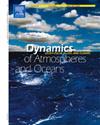Formation mechanism of overshooting convection in the southwest vortex circulation under the influence of mesoscale gravity wave
IF 2
4区 地球科学
Q2 GEOCHEMISTRY & GEOPHYSICS
引用次数: 0
Abstract
Using ERA5 reanalysis data, GPM satellite precipitation products, and radar mosaic combination reflectivity (RMCR) data, the formation mechanism of overshooting convection (OC) in the southwest vortex (SWV) circulation under the influence of mesoscale gravity wave (MGW) on 18 Jul 2022 was analyzed on synoptic dynamics to deepen the understanding of the correlation characteristics between the SWV and the MGW, and then to explore the formation mechanism of OC in the Sichuan Basin (SCB). Results showed that the undulating terrain and stable atmospheric stratification generated the MGW. The adjustment of the SWV circulation caused the strong water vapor flux convergence at 850 hPa in the early stage of OC. The change of divergence field caused by MGW promoted the eastward development of the updraft in the SWV circulation, and the SWV center tilted to the southeast. The ascending center separated by the SWV merged horizontally with the updraft phase of MGW, and the merged ascending airflow connected vertically to the ascending center in the upper troposphere. The water vapor convergence and heating center in the upper troposphere and the horizontal wind momentum transporting upward led to OC. The strengthening of the negative vertical vorticity phase of MGW and the movement of dry cold air mass led to the northwestward propagation of negative vertical vorticity, thus forming the difference in the vertical distribution of vertical vorticity, which was negative in the upper and positive in the lower. The stable updraft phase of the MGW and the dry cold air mass propagation cooled the lower atmosphere and increased the convective available potential energy (CAPE). The adjustment of the internal circulation of the SWV extended the range of convective instability from the ground to 600 hPa, which was also conducive to the formation of OC.
中尺度重力波影响下西南涡旋环流中过冲对流的形成机制
利用ERA5再分析资料、GPM卫星降水产品和雷达马赛克组合反射率(RMCR)资料,从天气动力学角度分析了2022年7月18日中尺度重力波(MGW)影响下西南涡旋(SWV)环流中过冲对流(OC)的形成机制,以加深对SWV与MGW相关特征的认识,进而探讨四川盆地(SCB) OC的形成机制。结果表明,起伏的地形和稳定的大气分层形成了MGW。SWV环流的调整导致OC前期850 hPa水汽通量辐合较强。MGW引起的辐散场变化促进了SWV环流上升气流向东发展,SWV中心向东南倾斜。被SWV分隔的上升中心在水平方向上与MGW上升气流相合并,合并后的上升气流在垂直方向上与对流层上层上升中心相连。对流层上层水汽辐合加热中心和水平风向向上输送导致了OC的产生。MGW负垂向涡度相的增强和干冷气团的移动导致负垂向涡度向西北传播,从而形成了垂直涡度垂直分布上负下正的差异。MGW稳定的上升气流阶段和干冷气团的传播使低层大气冷却,对流有效势能(CAPE)增加。SWV内部环流的调整将对流不稳定范围从地面延伸至600 hPa,也有利于OC的形成。
本文章由计算机程序翻译,如有差异,请以英文原文为准。
求助全文
约1分钟内获得全文
求助全文
来源期刊

Dynamics of Atmospheres and Oceans
地学-地球化学与地球物理
CiteScore
3.10
自引率
5.90%
发文量
43
审稿时长
>12 weeks
期刊介绍:
Dynamics of Atmospheres and Oceans is an international journal for research related to the dynamical and physical processes governing atmospheres, oceans and climate.
Authors are invited to submit articles, short contributions or scholarly reviews in the following areas:
•Dynamic meteorology
•Physical oceanography
•Geophysical fluid dynamics
•Climate variability and climate change
•Atmosphere-ocean-biosphere-cryosphere interactions
•Prediction and predictability
•Scale interactions
Papers of theoretical, computational, experimental and observational investigations are invited, particularly those that explore the fundamental nature - or bring together the interdisciplinary and multidisciplinary aspects - of dynamical and physical processes at all scales. Papers that explore air-sea interactions and the coupling between atmospheres, oceans, and other components of the climate system are particularly welcome.
 求助内容:
求助内容: 应助结果提醒方式:
应助结果提醒方式:


